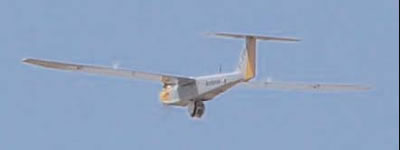The U.S. Navy UAS program office PMA-263 is planning to expand the family of unmanned aerial systems (UAS) operated by the Navy and Marine Corps. Currently the services use the Pioneer Tactical UAV (known as Tier III) which will be sustained in service until 2009, when the new Vertical Takeoff UAV (VTUAV) is expected to mature. The USMC also operates the miniature Dragon Eye (Tier I). The Marine corps are also provided with Intelligence, Surveillance and Reconnaissance (ISR) services performed by Boeing, with its ScanEagle UAS.
PMA-263 intends select a Small Tactical UAS (known as STUAS or Tier II UAS) in a competition to be opened by fall 2007. The required system would deliver persistent intelligence, surveillance, and reconnaissance support for tactical level decisions and unit level defense, as well as protecting Navy ships and Marine Corps land forces.
The STUAS / Tier II is scheduled to reach initial operational capability in FY 10. The Marine Corps Warfighting Lab in Quantico, Virginia, has begun a Tier II UAS concept demonstration effort utilizing MTC’s SpyHawk UAS. This system will serve as a test bed for developing concepts of operation; techniques, training and procedures (TTPs); new technologies; and advanced payloads. SpyHawk is capable of flying missions of up to 12 hours endurance in day and or night. The payload provides accurate geo-referenced imagery with target tracking capability and laser illuminator.
During the three year evaluation program, the Warfighting lab plans to employ the Spyhawk to evaluate both electric motor and heavy fuel engine propulsion. Various sensors will be tested, including advanced electro-optical/Infrared as well as multi- and hyper-spectral imaging sensors, laser designator, miniature Synthetic Aperture Radar (SAR) sensors. Other payloads to be tested include communications and data relays and signals intelligence (SIGINT).

















